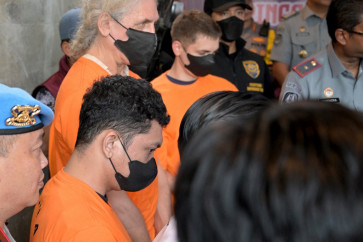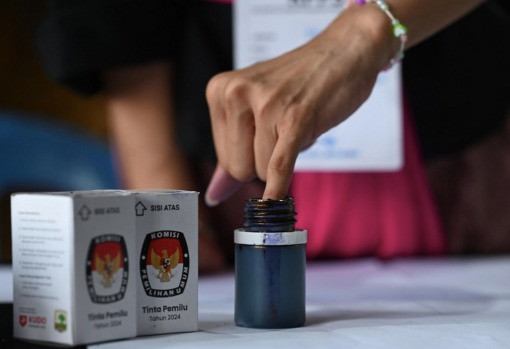2010 - a year for employee engagement (Part I)
The feted US General Norman Schwartzkopf once said: “I have seen competent leaders who stood in front of a platoon and all they saw was a platoon
Change Size

T
he feted US General Norman Schwartzkopf once said: “I have seen competent leaders who stood in front of a platoon and all they saw was a platoon. But great leaders stand in front of a platoon and see it as 44 individuals each of whom has aspirations.”
One key differentiator between competent leadership and great leadership whether at corporate or individual level relates to the challenge of employee engagement.
The lack of engagement has become a serious problem in many companies in Indonesia and this is also evident from the kinds of words and phrases that dominate internal communication.
A talented resource becomes a “headcount number” and the strategy for managing teams is driven by the negatives of “adjusting, reducing, rationalizing and downsizing” as opposed to the positives of “enhancing, developing, inspiring and energizing”. Since 2008 when recessionary conditions afflicted several parts of the globe (but only partially felt in Indonesia) several managements went into “freeze” mode — freeze budgets, resources, discretionary spending, motivational programs and so on.
However, at the same time expectations on productivity, multi-tasking, competency development and performance targets have and continue to increase. This creates disconnects that must be understood and properly managed.
Over the years employees in emerging markets like Indonesia have come to accept disconnects, even those increasingly unfair. For example “higher targets despite nominal or negligible wage increases” or “40 hour week in MNC home countries and 65 hour weeks in emerging markets” or “share the pain of related business and subsidiary failures but don’t share the gain” or widening compensation gaps between senior management and junior/operating levels justified on grounds of “market and sector realities”. When disconnects get exacerbated with insufficient engagement then companies and their managers are operating on a slippery slope. A slippery slope that leads to declining quality levels, lower efficiency, inconsistent service, drying up of suggestions and eventually high staff turnover.
So after a period of doomsday scenario forecasting, forced budget cuts, shelved business development and absence of risk taking — all of which have a demoralizing impact on employees — it’s time to begin the process of revitalization in 2010. And a sensible start is to make it the “Year of Employee Engagement”. Begin by asking yourself three critical questions — first, “do we in this company look at employees as individuals rather than as numbers on a spreadsheet?” Second, “do managers in this company pay the same attention to employee aspirations that they do to running factories, marketing products, handling customers and satisfying bosses?” Third, “what percentage of employees genuinely enjoys coming to work and contributing with passion?”
The three questions and their honest assessment chart the level of employee engagement that a company is demonstrating. It will be surprising for readers to note that there are still many companies (including some MNCs) that are yet to progress beyond level 1. In such companies employees are a means to an end and it is expected that they remain content with their salary and some benefits.
Such companies are likely to have a closed top team, a culture of fear, absence of two way communication and HR departments that are overburdened by routine administration. Skills development is considered an expense and the majority of the employees are considered, often erroneously, to be “dispensable”.
With HR getting increasing prominence in Indonesia many companies, at least on paper, have detailed people development plans. And yet they stumble at the second hurdle. Because while the intentions of the HR department might be good and even though they might be switched on about the feelings of employees they find that the business managers and department heads give engagement abysmally low priority. So managers will go out of the way to find a customer’s restaurant preference or understand in detail the specs of a new project or develop expertise in making multiple cash flow forecasts to support business plans.
But ask them about what are the key work life balance concerns of their direct reports and they fumble. Why is a particular staff stagnating? Is there a defined program to coach and mentor her? Are we making the head office or CEO or promoter “listen” for a change to local staff or do they only “dictate”.
Even where companies believe that their managers are making an effort the proof as they say lies in the engagement pudding. If the engagement is merely a box ticking exercise and performance management is a back of the envelope-quota driven formality then it is unrealistic to expect passion, energy and drive. The “we are doing so much but employees remain casual” stems from an over-estimation of the efforts at employee engagement. Just as it is presumptuous to term a client relationship as “perfect” it is naïve to believe employee engagement is a numerical target that can be achieved on some survey, feedback session or HR calendar.
Employees bring with them a complex mix of attitudes, aspirations, strengths, weaknesses, development issues, challenges, ideas and talents. It is through a comprehensive engagement program that companies can start to understand these and then design actionable strategies to enhance strengths, address weaknesses and create a work atmosphere that is conducive not claustrophobic.
Research indicates that only around 30 percent of employees are “actively engaged” with the remaining 70 percent being busy but not really blazing any trails, either individually or collectively. And if you detect a state of stagnation, don’t blame the employees — they simply have not been genuinely and consistently engaged by the organization and its top team.
The columnist is CEO of international management consulting firm IndonesiaWISE and can be contacted at amoltitus@indonesiawise.com. The second part of this article next week will look at employee engagement applications in Indonesia.









